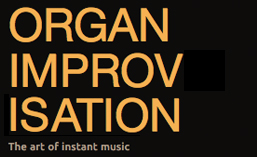Olivier Messiaen was one of the primary composers that introduced Eastern modes and rhythms to the organ world. In the video below, Willem Tanke shows how an improvisation can be built using two different but specific Indian rhtyhms: Ardha Shikhar Taal and Ardha Jhaptaal.
Category Archives: Style
Multi-Organist Improvisation
As impressive as it may seem to hear one organist improvise, there are occasions where two or more organists gather together and improvise, either one after another, or perhaps even at the same time. Below are a few videos from YouTube where you can see how different artists manage to make this happen.
Olivier Latry, Vincent Dubois, Paolo Oreni and Michael Bottenhorn – Happy Birthday – St. Joseph, Bonn Beuel
Olivier Latry, Philippe Lefèbvre, Vincent Dubois, Paolo Oreni and Kalevi Kiviniemi – Improvisation-à-cinque – St. Joseph, Bonn Beuel
Olivier Latry & Philippe Lefebvre – Variations Pt. 1
Olivier Latry & Philippe Lefebvre – Variations Pt. 2
Frédéric Blanc, François-Henri Houbart and Olivier Latry improvise
Vivaldi Style
Tournemire Style
David McCarthy offers a handout from a presentation he did at Duquesne University with an analysis of the style of Charles Tournemire based upon the Five Improvisations that were transcribed by Maurice Duruflé. The handout offers suggested exercises to practice elements of Tournemire’s style.
Bach
Johann Sebastian Bach is often upheld as the master of German Baroque organ music, if not of all organ music ever written. For that reason, his music serves as models to study and represents a style for the improviser to master.
Book:
Pamela Ruiter-Feenstra
Bach and the Art of Improvisation
Volume One. Ann Arbor, MI: CHI Press, 2011.
Videos:
Latry – À la Bach – Notre Dame
French Classical Style
The French classical style runs parallel with the German baroque. The organ had a highly standardized stoplist, in line with its (almost exclusively) liturgical use. The compositions were highly standardized too, generally named by the stops that were to be used (e.g Plein jeu, Basse de Trompette, Tierce en Taille) and the function within mass or the chant theme (e.g Kyrie, Gloria, Ave Maria Stella).
A series in the newsletter covered the style and the different movements and registrations often used during the period:
- The French Suite
- The French Opening: Plein jeu
- The Second Part: Duos
- From Two to Three: Moving to Trios
- Récits: Registration and Unwritten Expectations
- Not All Solos Are for Soprano
- French Classic Fugues
- The Final Grand Jeu
Videos:
Michel Chapuis – Grand Jeu Classique – St. Ouen
Michel Chapuis – Improvisations in French classical style – Chapelle Royale, Paris
Otto Maria Krämer – Suite Francaise – Plein jeu
Otto Maria Krämer – Suite Francaise – Fugue
Otto Maria Krämer – Suite Francaise – Récit
Otto Maria Krämer – Suite Francaise – Basse de trompette
Otto Maria Krämer – Suite Francaise – Quatuor
Otto Maria Krämer – Suite Francaise – Duo
Otto Maria Krämer – Suite Francaise – Tierce en taille
Otto Maria Krämer – Suite Francaise – Dialogue sur les grands jeux
Wolfgang Seifen – Suite in French Style – Marienbasilika – Kevelaer

